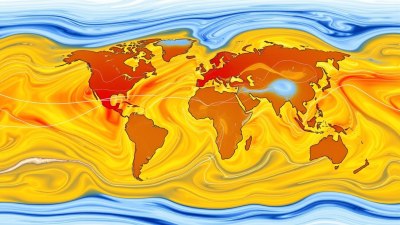Why Some Days Feel Warmer Than They Actually Are
Explore the factors that influence our perception of temperature on different days.

Have you ever stepped outside on a seemingly mild day, only to feel a wave of warmth hit you unexpectedly? You might wonder why certain days feel significantly warmer than the actual temperature suggests. This phenomenon can be attributed to various factors including humidity, wind, direct sunlight, and even our body's own responses. In this article, we'll delve into the science behind our temperature perception and explore why some days seem warmer than the thermometer reads.
The Science of Temperature Perception
To fully understand why some days feel warmer, we need to grasp how our bodies measure temperature. Humans are equipped with thermoreceptors—specialized neurons that detect changes in temperature. However, they don’t solely rely on the numeric temperature provided by a thermometer. Instead, thermoreceptors are influenced by several environmental variables that can skew our perception of warmth.
Humidity and Its Role
One of the most significant factors in how we perceive temperature is humidity. The amount of moisture present in the air greatly affects how heat is felt. High humidity levels make it harder for sweat to evaporate from our skin, which can lead us to feel hotter than we actually are. The skin's ability to cool the body decreases, causing discomfort. In contrast, low humidity levels can make cooler temperatures feel more bearable, even comfortable, because the sweat can evaporate more quickly, offering a natural cooling mechanism.
Wind Chill Factor
Wind is another crucial element influencing our perception of temperature. On particularly windy days, the wind chill factor can make the air feel significantly colder than it actually is. However, in calm conditions, heat can feel more concentrated and trap more warmth near the body. On breezy days, you might find that a sunny day seems warmer, as the sun’s rays can counterbalance the chill from the wind. Conversely, on a still day, when the air lacks movement, your body may not feel as much cooling effect, potentially leading you to feel warmer.
Direct Sunlight Effects
Another component to consider is the impact of direct sunlight. On overcast or cloudy days, temperatures can stay mild, yet people often report feeling cold. On the other hand, a sunny day with the same temperature might feel warmer because sunlight provides additional warmth. Solar radiation increases the heat felt on the skin, even if air temperatures remain unchanged. The skin absorbs this heat, leading to a subjective experience of warmth that surpasses the ground temperature readings.
Clothing and Activity Levels
Personal factors such as clothing and activity levels also play a significant role. The way we dress for the weather can lead to varied experiences of temperature throughout the day. Wearing layers can allow for warmth on chilly mornings, but if we engage in physical activity, we might start to feel warmer due to body heat production. Conversely, dressing too lightly on a colder day can lead us to feel excessively cold if wind or low temperatures are present. Your activity also influences how hot or cold you feel; for example, exercise increases body temperature, and standing still in the cold can quickly lead to feeling chilly.
Psychological Factors
Believe it or not, psychological factors also come into play when judging temperature. Our brain processes external stimuli and combines them with contextual information. If you associate a particular season with warmth, a sunny winter day might feel unusually warm compared to an overcast spring day, even if temperatures are similar. This subjective experience of temperature can lead to discrepancies between what we know and what we feel.
Adapting to Temperature Changes
Humans are adept at adapting to temperature changes over time. Generally, when we experience a hot summer, our bodies acclimate to the heat. As a result, the same temperature might feel much cooler when autumn arrives after a summer of heat. Seasonal changes can drastically alter our comfort levels. For instance, a 70-degree Fahrenheit day in late August can feel significantly cooler compared to the same reading in early June.
The Importance of Medical Conditions
Certain medical conditions can also affect how temperature is perceived. For instance, chronic illnesses or hormonal changes can lead individuals to experience heat differently. Those with thyroid issues may be more sensitive to cold, while everyone from children to elderly individuals may feel temperature extremes more acutely due to variations in metabolic rates and heat tolerance. Medications can also influence how we feel temperature, making us more susceptible to feeling hot or cold at given thresholds.
Ecological and Environmental Influences
The environment can influence perceived temperatures in subtler ways, including the presence of heat-absorbing materials like asphalt in urban areas. Cities often have higher temperatures than surrounding rural areas, a phenomenon known as the urban heat island effect. This can lead to feeling warmer indoors versus outdoors even when it's the same temperature, as buildings absorb heat during the day and release it slowly at night.
Understanding Our Weather Perception
Understanding why some days feel warmer than they are revolves around multiple intertwining factors, from environmental conditions to personal circumstances. While thermometers provide an accurate measurement, our senses contribute to our subjective experience of temperature. When stepping outside, consider how elements like humidity, wind, sunlight, activity levels, and psychological aspects may influence your body’s perception of warmth. This human experience with temperature is complex, emphasizing that our environment significantly shapes our daily lives. So the next time you find yourself feeling exceptionally toasty or unexpectedly chilly, you’ll have a better understanding of the reasons behind it.











